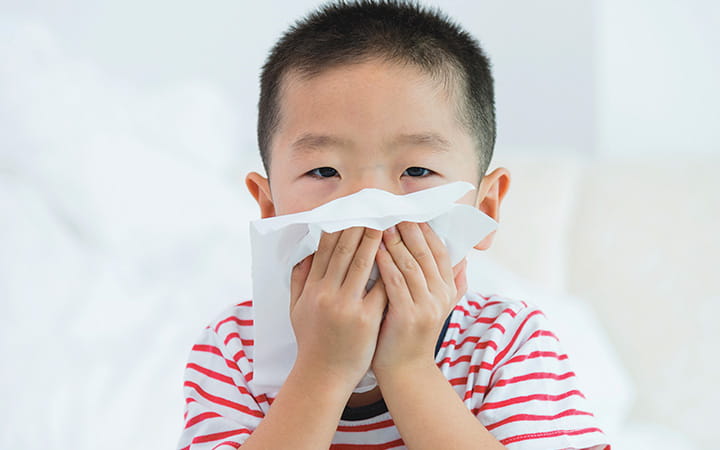Still Sneezing? Fall Doesn't Mean the End of Allergy Season
September 09, 2020


Is your family ready to say goodbye to seasonal allergies now that spring and summer have passed? Not so fast. Unfortunately, for many, the approaching autumn doesn’t mean relief from sneezing. Instead, it marks a new array of allergy triggers.
Blame It on the Ragweed
The biggest culprit of late summer and fall allergies is ragweed and other weed pollens. If your child is allergic to ragweed pollen, it may keep him or her sniffling until the first frost. Ragweed is most prevalent in the Eastern and Midwestern states, and it’s prolific: Just one plant is able to produce up to 1 billion pollen grains in one season.
Other autumnal triggers include certain molds, which can grow on fallen leaves, on rotting wood and in compost piles. Mold can also grow indoors in areas that are moist, such as bathrooms, basements and kitchens. Pet dander and dust mites are other allergens that can cause allergies to flare up year-round.
“Whether your child’s allergies are caused by ragweed or another allergen, symptoms typically include watery eyes, congestion, nasal discharge, and an itchy throat and nose,” says Princess Ogbogu, MD, Chief of Allergy, Immunology & Rheumatology at UH Rainbow Babies & Children’s Hospital. Children with severe allergies may also contend with chronic sinusitis and asthma symptoms.
“To determine which allergen is causing your child’s symptoms, consider seeing a board-certified allergist/immunologist,” Dr. Ogbogu says. “When necessary, allergy testing can help identify the culprit. We have different methods of testing; sometimes skin prick testing and in other situations blood testing.”
Finding Relief
Dr. Ogbogu recommends these tips to minimize your child’s exposure and help control symptoms this upcoming season:
- Limit outdoor exposure when pollen counts are at their highest. Ragweed pollens are usually highest in the morning, but to learn the specific pollen count for your area, visit the American Academy of Allergy Asthma & Immunology and search for “pollen counts.”
- Wash hands, face, and bathe when done with outdoor exposure.
- Keep windows and doors closed and use an air conditioner with HEPA filtration when available.
- Avoid playing with leaves or having your child help with raking leaves if they are mold allergic.
- Keep the humidity levels inside your house between 30 and 50% to limit mold growth and dust mite exposure.
- Schedule an appointment with your child’s teachers to discuss his or her triggers and treatment plan. Mold and animal dander can be found in classrooms. Encourage your child to tell a teacher or nurse if symptoms worsen.
- Try using over-the-counter medications such as nasal sprays to control symptoms. If these don’t offer enough relief, call your child’s pediatrician and consider referral to an allergy/immunology specialist.
Related Links
UH Rainbow Babies & Children’s Hospital’s Division of Pediatric Allergy and Immunology offers comprehensive medical care for babies, children, adolescents and adults. Our board-certified pediatric allergists and immunologists provide leading-edge evaluations and treatments for children with allergies and related conditions. Learn more about pediatric allergy and immunology services at UH Rainbow Babies & Children's.


